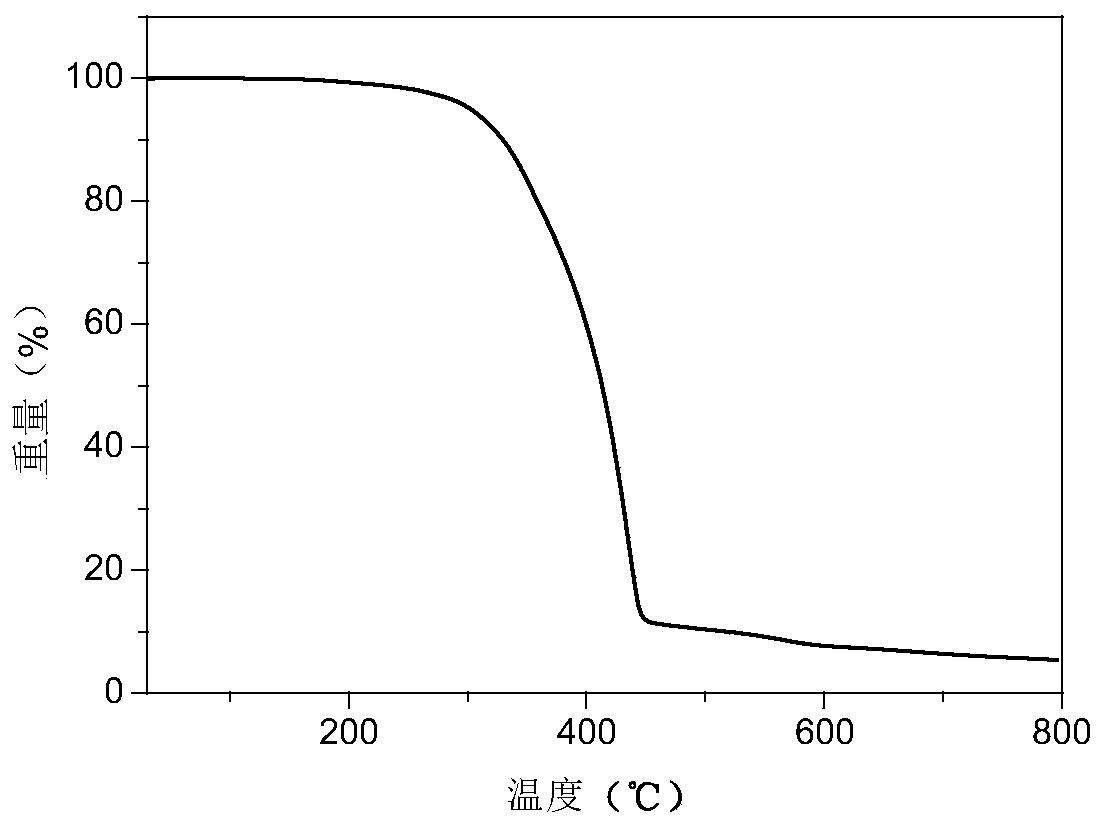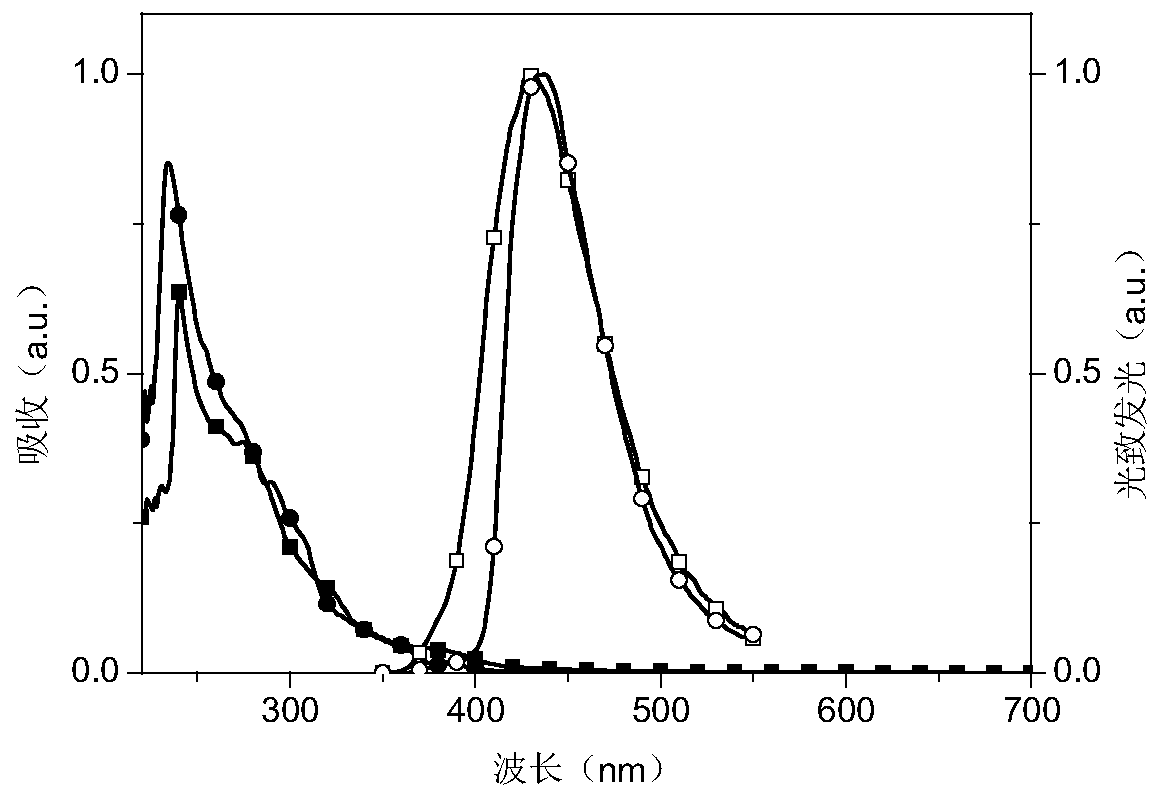Phosphino-oxy boron complex dark-blue photo-thermal excitation delayed fluorescence material as well as synthesis method and application thereof
A phosphine oxide boron, delayed fluorescence technology, applied in the field of thermally excited delayed fluorescent materials, can solve the problems of quenching, triplet-triplet annihilation concentration, etc., to improve efficiency, reduce quenching effect, and improve electron injection and transmission. effect of ability
- Summary
- Abstract
- Description
- Claims
- Application Information
AI Technical Summary
Problems solved by technology
Method used
Image
Examples
specific Embodiment approach 1
[0034] Specific embodiment 1: In this embodiment, the structural formula of the phosphine-oxy-boron complex deep blue light-thermal excitation delayed fluorescence material is as follows:
[0035]
[0036] When X is a diphenylphosphineoxy group and Y is H, its structural formula is:
[0037]
[0038] When X is a diphenylphosphineoxy group and Y is a diphenylphosphineoxy group, its structural formula is:
[0039]
specific Embodiment approach 2
[0040] Specific embodiment two: the synthetic method of the phosphine oxide boron complex deep blue light thermally excited delayed fluorescent material in the specific embodiment one, the synthetic method is as follows:
[0041] 1. Dissolve 3-5mmol of 3,6-di-tert-butylcarbazole in dichloromethane and place it in the reaction flask, and dissolve 5-10mmol of N-bromosuccinimide in dimethylformamide , poured into a constant pressure dropping funnel and added dropwise at room temperature, stirred the reaction at room temperature until the dropwise addition was completed, extracted with water and dichloromethane, combined the organic layers, and removed the organic solvent after drying to obtain a crude product, which was drenched with petroleum ether. Purified by detergent column chromatography to obtain 1-bromo-3,6-di-tert-butyl-9-methyl-9H-carbazole or 1,8-dibromo-3,6-di-tert-butyl-9H-carbazole azole.
[0042]2. After placing the product synthesized in 3~5mml step 1, palladium ...
specific Embodiment approach 3
[0044] Specific embodiment three: the difference between this embodiment and specific embodiment two is that in step one, 5 mmol of 3,6-di-tert-butylcarbazole is dissolved in dichloromethane and placed in a reaction flask, and 50 mmol of N-bromo Succinimide was dissolved in dimethylformamide. Others are the same as in the second embodiment.
PUM
| Property | Measurement | Unit |
|---|---|---|
| thickness | aaaaa | aaaaa |
| thickness | aaaaa | aaaaa |
| thickness | aaaaa | aaaaa |
Abstract
Description
Claims
Application Information
 Login to View More
Login to View More - R&D
- Intellectual Property
- Life Sciences
- Materials
- Tech Scout
- Unparalleled Data Quality
- Higher Quality Content
- 60% Fewer Hallucinations
Browse by: Latest US Patents, China's latest patents, Technical Efficacy Thesaurus, Application Domain, Technology Topic, Popular Technical Reports.
© 2025 PatSnap. All rights reserved.Legal|Privacy policy|Modern Slavery Act Transparency Statement|Sitemap|About US| Contact US: help@patsnap.com



